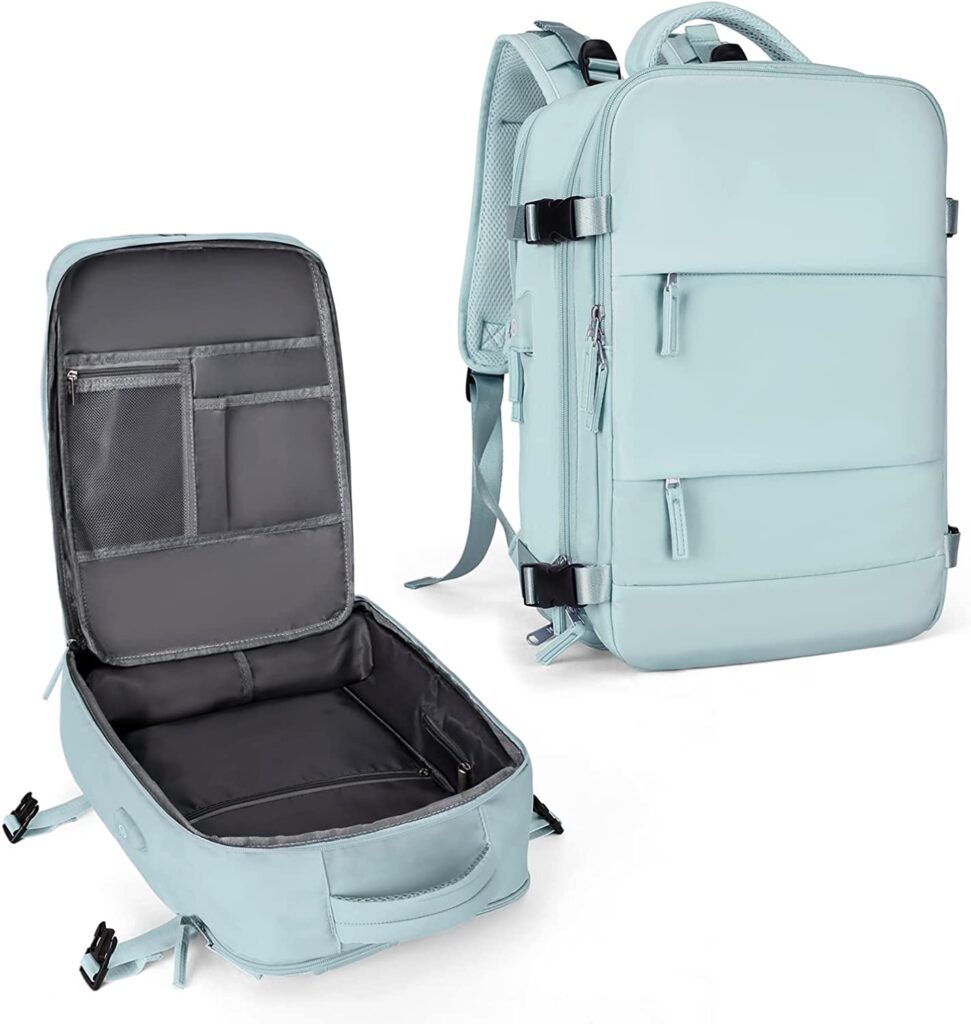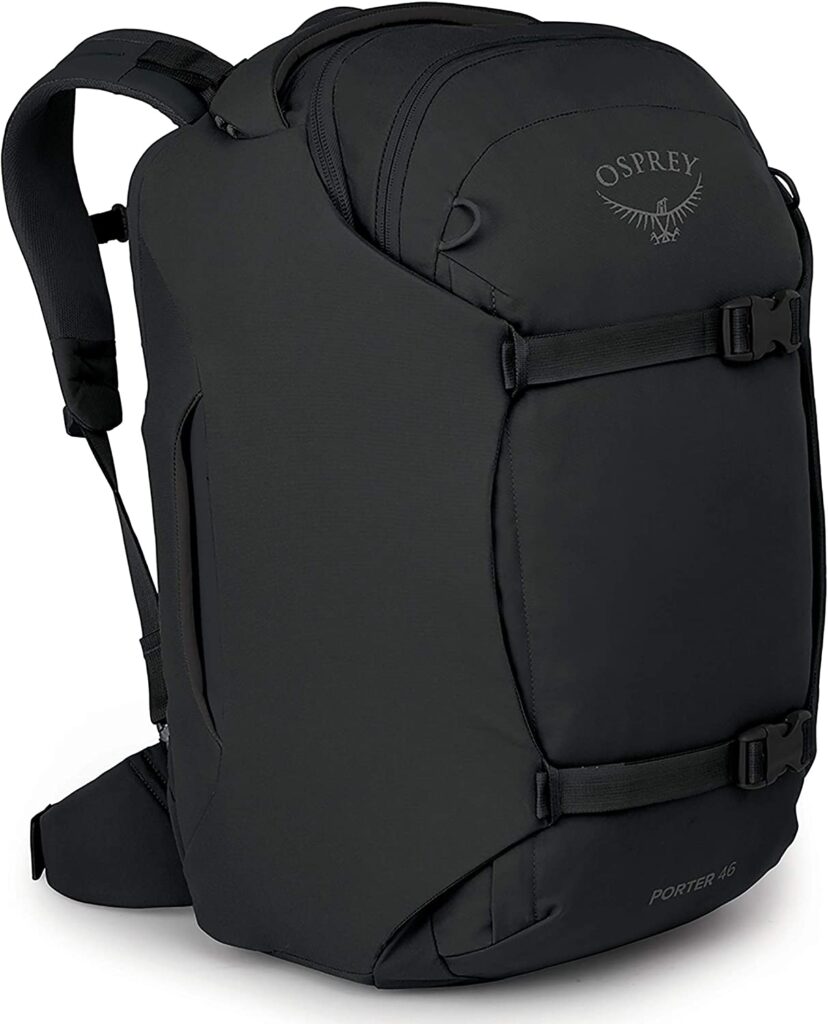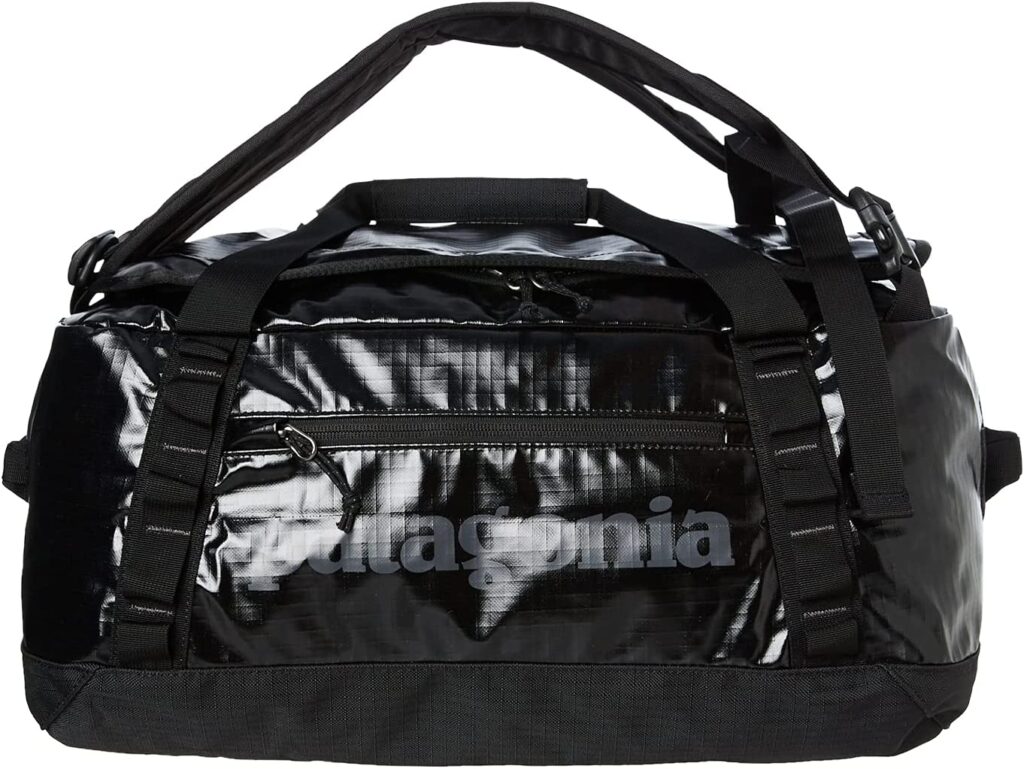We want you to get things right for your European vacation so we have written an ultimate guideline about Carry-on luggage size for Europe in this article. There are a lot of things you need to know and prepare other than your clothes and gadgets. You also need to consider airline rules and regulations regarding carry-on luggage size.
To avoid the hassle of having to check in luggage or pay extra fees, it’s essential to know the carry-on luggage size restrictions for Europe. This blog will cover everything you need to know about carry-on luggage size for Europe, so you can buy the correct travel luggage and travel with ease.
Also, we will cover the factors you need to know when buying carry-on luggage for your European tour. For your other travel essentials, you can read the article here.
Carry-on luggage size Europe: Airlines and their restrictions for European flights
| Airline | Carry-on luggage size restrictions | Maximum Weight Limit |
| Aer Lingus | 55cm x 40cm x 24cm (includes wheels and handles) | 10kg |
| Air France | 55cm x 35cm x 25cm (including pockets, wheels and handles) | 12kg |
| Alitalia | 55cm x 35cm x 25cm (including wheels and handles) | 8kg |
| British Airways | 56cm x 45cm x 25cm (including handles, pockets, and wheels) | 23kg |
| Brussels Airlines | 55cm x 40cm x 23cm (including wheels and handles) | 12kg |
| Delta Airlines | 56cm x 35cm x 23cm (including handles and wheels) | No weight limit |
| easyJet | 56cm x 45cm x 25cm (including handles and wheels) | No weight limit |
| Emirates | 55cm x 38cm x 20cm (including handles and wheels) | 7kg |
| Eurowings | 55cm x 40cm x 23cm (including handles and wheels) | 8kg |
| Finnair | 56cm x 45cm x 25cm (including pockets, wheels, and handles) | 8kg |
| Iberia | 56cm x 45cm x 25cm (including wheels and handles) | 10kg |
| KLM Royal Dutch | 55cm x 35cm x 25cm (including pockets, wheels, and handles) | 12kg |
| Lufthansa | 55cm x 40cm x 23cm (including handles and wheels) | 8kg |
| Norwegian Air | 55cm x 40cm x 23cm (including wheels and handles) | 10kg |
| Ryanair | 40cm x 20cm x 25cm (including wheels and handles) | 10kg |
| SAS Scandinavian | 55cm x 40cm x 23cm (including wheels and handles) | 8kg |
| Swiss International | 55cm x 40cm x 23cm (including handles and wheels) | 8kg |
| TAP Air Portugal | 55cm x 40cm x 20cm (including wheels and handles) | 8kg |
| Turkish Airlines | 55cm x 40cm x 23cm (including handles and wheels) | 8kg |
| Virgin Atlantic | 56cm x 36cm x 23cm (including handles and wheels) | 10kg |
Note that these restrictions are subject to change, so it’s always best to check with the airline directly before packing for your trip.
What is carry-on luggage?

Carry-on luggage refers to the type of luggage that you’re allowed to bring with you onto the airplane and can be stored in the overhead bin or under the seat in front of you.
There are carry-on size restrictions set and must be followed by every passenger.
According to EU regulations, the maximum dimensions for carry-on luggage are 56cm x 45cm x 25cm, which includes any handles, wheels, or side pockets.
Some airlines may have stricter requirements so it’s important to check with your specific airline before your trip to avoid any unwanted extra costs and delays.
Take into consideration that every weight restriction varies from airline to airline. For Europe carry-on luggage, weight can range from 7kg to 10kg, depending on the airline.
What are European luggage carry-on size restrictions?
European luggage carry-on size restrictions are the rules that airlines set for the size and weight of luggage that you can bring with you on board the plane. These restrictions vary by airline and can be different for domestic and international flights.
As a general rule, carry-on luggage should be small enough to fit in the overhead bin or under the seat in front of you.
Knowing the carry-on luggage size restrictions in Europe is crucial for several reasons.
Firstly, it helps you avoid having to check in luggage or pay extra fees, which can be costly and time-consuming.
Secondly, it ensures that your luggage fits in the overhead bin or under the seat in front of you.
Lastly, it helps you pack smarter and more efficiently, which can save you time and reduce the stress of travel.
Carry-on Luggage Size for Europe: Understanding Restrictions
There are restrictions set by the European Union (EU) as well as individual airline companies about carry-on luggage size restrictions when travelling to Europe. Knowing these various restrictions will save you costly extra payments and valuable time.
Here are some examples of popular European airlines and their carry-on luggage size restrictions:
- Ryanair: Maximum size of 40cm x 20cm x 25cm and a weight limit of 10kg
- EasyJet: Maximum size of 56cm x 45cm x 25cm and a weight limit of 15kg
- British Airways: Maximum size of 56cm x 45cm x 25cm and a weight limit of 23kg
- Lufthansa: Maximum size of 55cm x 40cm x 23cm and a weight limit of 8kg
It’s important to note that these size restrictions can change and varies from airline to airline, so check with your airline before packing for your vacation.
Tips for Measuring Your Luggage to Ensure it Meets the Size Requirements
Measuring your luggage before your trip can save you time and hassle at the airport.
- When measuring, including the handles and wheels get the exact height, width and depth of your Europe travel bag. You can use a ruler or a measuring tape.
- Take into account any side pockets or compartments, as these can add to the overall size of your luggage.
- If you’re unsure whether your luggage meets the size requirements, you can check the product description or brochure that comes with the bag when buying a piece of luggage.
Advantages of Packing Light for Travel in Europe
Packing light is always a good idea, but it is especially important when travelling to Europe. Many European airlines have strict rules about the size and weight of your luggage, and checked baggage fees can be expensive.
By packing with carry-on luggage, you can avoid these fees and save money on your travels.
Additionally, travelling with a smaller bag makes it easier to navigate busy airports, train stations, and crowded city streets. Especially if you are commuting or taking public transport, then packing light is something you should consider beforehand.
Comparison of Carry-On Luggage vs. Checked Luggage for European Travel
While packing light has many benefits, it can also be challenging, especially if you’re traveling with kids or packing for a long vacation where you need more stuff than usual.
However, with a little planning and organization, packing with carry-on luggage can be just as efficient and even more convenient than checking a bag.
Did you know you can organize and pack effectively using packing cubes? Yes, packing cubes can do the magic when it comes to organizing your clothes and other belongings. Check out these awesome packing cubes here.
When you pack with a carry-on, you don’t have to worry about lost or delayed luggage, and you can move through airport security and customs more quickly.
Tips for Packing Efficiently and Maximizing Space in a Carry-On Bag

To make the most of your carry-on luggage, it’s important to pack efficiently and maximize the space you have. Start by choosing a high-quality carry-on bag that is lightweight and durable.
Look for one with multiple compartments and pockets to help you stay organized. When packing your bag, roll your clothes instead of folding them to save space and prevent wrinkles.
Use packing cubes or compression bags to further compress your clothing and create more space in your bag. Don’t forget to pack versatile, comfortable clothing that can be mixed and matched, as well as any necessary toiletries and electronics.
Choosing the Right Carry-on Luggage for Europe
Make your European trip hassle-free by choosing the right carry-on luggage.
There are many travel bags available in the market and it can be difficult to choose the best one for you.
Types of Carry-on Luggage for international travel
In order for you to choose the best carry-on travel bag for your European trip, it’s important to know the different types of carry-on luggage available. The most common types include:
- Backpacks – Backpacks are a popular choice among travelers as they allow for easy mobility and can fit comfortably in overhead compartments on planes. But you need to consider that not all backpacks can be taken as carry-on. Consider the size of your backpacks too. Read more about backpacks here.
- Rolling Suitcases – Rolling suitcases are a great option for those who prefer a more traditional luggage option. They come in various sizes and styles and can also fit in overhead compartments. Some travelers prefer rolling suitcases as carry-on travel bags because of the ease of the wheels rather than carrying the entire baggage.
If you are traveling with kids or traveling for a longer vacation, then you might want to consider a rolling suitcase as your carry-on for your own comfort.
- Duffel Bags – Duffel bags are lightweight and easy to carry, making them ideal for short trips or weekend getaways. They can also fit in overhead compartments on planes. Check out duffel carry-on bags if you are having a weekend trip.
Factors to Consider When Choosing Carry-on Luggage for Europe
When choosing a carry-on luggage for Europe, there are a few factors to consider to ensure that it’s the right fit for your needs.
- Size – Europe has strict regulations on carry-on luggage size, and it’s important to choose a bag that meets these requirements. The standard size limit is usually 55cm x 40cm x 20cm, but it’s always best to double-check with your airline before traveling.
- Weight – Most airlines have weight restrictions for carry-on luggage, so it’s important to choose a bag that is lightweight and doesn’t exceed these limits.
3. Durability – European travel can be tough on luggage, so it’s important to choose a bag that is made from durable materials and can withstand wear and tear.
Best Carry-on Luggage for Europe
After considering the factors above, it’s time to choose the best carry-on luggage for your trip to Europe. Here are some of our top recommendations:
- Samsonite Omni PC Hardside Spinner – This suitcase is durable, lightweight, and has 360-degree spinner wheels for easy mobility. It also meets most airline size and weight requirements.

- Osprey Farpoint 40 Travel Backpack – This backpack is versatile and can be used for both short and long trips. It’s lightweight, durable, and has comfortable straps for easy carrying.

- Patagonia Black Hole Duffel Bag – This duffel bag is made from durable and weather-resistant materials, making it perfect for outdoor adventures. It’s also lightweight and easy to carry.

In conclusion, understanding the carry-on luggage size restrictions for Europe is essential for any traveler planning a trip to this continent. By adhering to these guidelines, you can pack smarter, travel with ease, and avoid any unnecessary fees or delays.
With our recommendations, you can be confident in choosing a durable and reliable option for your upcoming European adventure.
I hope this article helped you with your carry-on luggage size for Europe questions.
Have a thrilling hassle-free vacation!
Disclosure: This post may contain affiliate links, and if you use these links to buy the recommended products, we earn a small commission. Rest assured that it has no effect on you as a customer.

